What makes a great prepper watch? If I could summarize it all into one sentence it would be this: A great prepper watch is one that is affordable, tough yet comfortable, is not bound to a traditional battery lifespan, is packed with practical features that are not gimmicky and is one that does not require a PhD in order to figure out. I believe that the Casio PRO-TREK PRW2500T-7 has all of those features but only time will tell (no pun intended). As I’ve only had the watch for a few days I consider this my initial review and plan on posting up a follow up in 6 months to a year after I’ve had multiple opportunities to put the watch through its paces.
First Impressions
When you pick up the watch you expect it to be much heavier than it actually is, my first thought was “wow this is light!” The watch looks good enough for everyday wear whether it be business casual, jeans and a T shirt or full on 5.11 prepper “operator” garb. It’s not too gaudy on the wrist and all of the data on the face is neatly displayed. I’m one of those guys who likes information presented in an orderly manner, some of those analog watches with the multiple dials confuse me. I want to go hiking, I’m not trying to navigate into outer space via the space shuttle.
Affordability
This is where the internet wins over retail stores and quite frankly the price gap was so wide there is no way I could refuse the ease of use of Amazon. Additionally I always enjoy reading the reviews posted at Amazon of a particular product I’m interested in prior to a purchase. While shopping around, depending on the store I visited the general range was between $350 to $400 for this watch. I was able to order it from Amazon for $222 and get free 1 day shipping to my home, that’s a smoking deal! While $222 isn’t exactly chump change it is very affordable relative to other popular watches (Suunto / Luminox) which can run into the $500’s quite easily. Sure my $30 Timex Ironman is a fraction of that cost but the difference between that and the Casio PRO-TREK is ridiculous. A final point on price, as of today’s writing the best Amazon has is now $262 plus shipping.
Comfort
What good is a watch if the thing is uncomfortable to wear? Notice in the picture above that the watch, even though it is metal, has what some refer to as winglets on the backside. This not only increases comfort but helps to keep it in place on your wrist. I really like this feature as I have other metal watches that do not have winglets and the difference is noticeable.
Features
Let’s get into the meat of the review and discuss features. I would be remiss in mentioning features without posting a picture of the manual that comes with this watch, it’s huge (some of the space dedicated to 2 other languages).
Here are a couple shots of the watch from various angles.
Solar Power: Easily one of the best features of this watch, as long as you have access to the sun you can keep the watch powered. The manual does state that you can use florescent lighting to charge the internal battery but as you can imagine that takes quite a bit longer than the sun. As a point of reference the manual states that 5 minutes of outdoor sunlight exposure is enough to power the watch for 1 day. You might be wondering what the actual rechargeable battery life is (from full power to drained) and per the manual it is an impressive 5 months!
Atomic Time Keeping: Talk about accuracy! Here in the US the watch receives a time calibration signal from Fort Collins, CO and updates its times accordingly. The watch then can display accurate times for major cities around the world and obviously within the US. It is possible to manually receive an update although I have not tried this feature.
Compass: I remember having one of those Rambo survival knives, you know the kind with the little worthless compass on the end of the handle…thankfully this watch has something better. I haven’t had an opportunity to put this compass through the paces but so far like what I see. It displays cardinal (N, NW, S, SW etc) directions, has a (magnetic) north seeking pointer which displays and also gives out a bearing reading (e.g. 150 degrees). Here’s the rub, based on what I’m reading this compass should be used more as a reference versus a tool for highly accurate orienteering. The manual clearly states that the margin of error for the direction indicator is plus or minus 11 degrees, a margin which can make a huge difference over even a few miles. Still I’d rather have the compass than not and do think in certain situations it could prove valuable.
Barometer: The watch has a graph which is displayed on the home screen with dots representing readings taken every 2 hours. The vertical Y axis represents the barometric reading with the horizontal X axis representing time. In general terms one should be able to glance at the trend of the graph and have an idea of what the weather will be like (improving, getting worse, rain, clearing) in the next day or two. When you depress the BARO button, an inches in Mercury reading is displayed, change since last reading is shown as well as a temperature reading. I’m skeptical as to the accuracy of the temperature, sitting on my wrist is shows 83 F while the reading on my wall shows 70 F.
**Update 12/28: I’ve figured out what the temp discrepancy is and it’s purely related to me wearing the watch and my body heat. I had the watch sitting on my dresser during a workout and then shower, when I got out the temp reading was 68 degrees F. I put the watch on and within 5 minutes it was up to 76 degrees F, and now 10 minutes later it is up to 80 degrees F. I checked the manual and it does state that in order to get the most accurate reading one should take the watch off and let it sit for up to 30 minutes. I guess another quick fix would be to subtract 10-15 degrees from the wrist reading, not exactly accurate but the body heat factor is somewhat unavoidable I suppose.
Altimeter: I have my altimeter set in feet versus meters and this one is rather straightforward. When you press the ALT button the readout is given as taken from sea level. There are some cool features the watch has which allows one to track elevation readings and store them, I haven’t gotten into that and probably never will.
Other Cool Stuff: On the home screen there is a display for moon phases and I can also bring up the tide information or sunrise / sunset data. Depending on where you are and what you are doing, that could all be very valuable information. I also like that the watch has a power saving / sleep mode which will assist in conserving battery life (there is a battery life indicator on the home screen too). For a full list of features check out Casio’s website.
Settings I Changed Immediately: Out of the box there were a few settings I had to change right away.
– 12 to 24 hour time display
– Temp from C to F
– Altitude from meters to feet
– Barometric pressure from hectopascals (hPa) to inches of mercury (inch Hg)
– Light illumination from 1.5 to 3 second intervals
Closing Thoughts
So far I have been very impressed with the watch. It meets all of my criteria as a great prepper watch and I’m anxious to see if over the next 6 months to a year that initial assessment holds true. I especially want to test its durability under adverse conditions and find out if some of the features like the compass are useful or just a waste of a button on the side of the watch. I’ve always been one of those guys who had a $30 Timex Ironman and scoffed that “all I need to do is tell time.” Now that I have stepped up my game I am quickly seeing what I have been missing for quite some time. As with anything information is power and this watch has the ability to provide the user with vital information beyond just telling the time, be it through daily operations or even a survival situation. So far I highly recommend it but don’t forget to check back for updates!

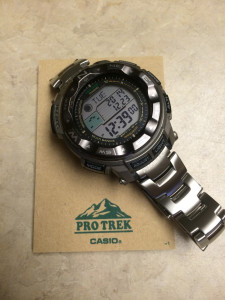
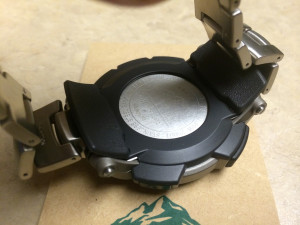
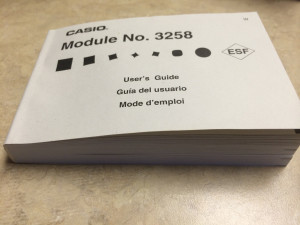
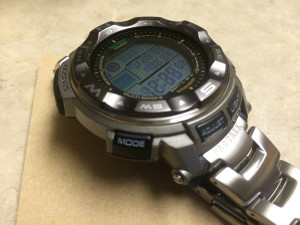
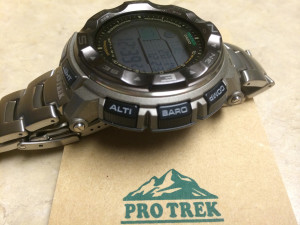








5 comments
Skip to comment form
One of the downfalls with the “atomic clocks” is that since it is assumed that they will update every day, or every other day, they are not very accurate when the updates are not available. Once that correction broadcast stops, the watches accuracy will quickly degrade.
I have had a Casio Pathfinder for about four years now, and that’s pretty much my biggest gripe so far.
Author
Definitely agree, that’s a weakness for certain. If that does happen I suppose my cheap Timex will get a chance to come off the bench. 🙂
But…if it’s TEOTWAWKI in the worst sense will time of day even matter? Hmm…
If I could add my two cents, I would personally recommend the Suunto Vector. It doesn’t have the solar charge ability but I can personally attest to its durability and reliability in the 8 years I’ve owned it. Its been overseas several times in some pretty adverse conditions and all I’ve had to do is change a battery every other year. That is with heavy use of the altimeter, compass and barometer functions, battery changes could probably be even more infrequent if you were exclusively using it for time\date. Again, just my 2¢…
Author
Kire
Thanks for the comment! I know Suunto produces quality time pieces, thanks for the recommendation based on personal experience.
Had similar Casio Pathfinder Triple Sensor solar watches for over 10 years. They still work great, despite heavy abuse. Used them everywhere: from tropical to arctic weather, from hot sauna to really cold creeks. I made several renovations to my house wearing them, so they were all covered in dirt, dust, paint.
Still – worked like a charm. Body was all scratched up, paint came off, but the sapphire glass was still crystal clear with not a single scratch. I would’ve use them for another 20 years, but the bracelet finally broke twice. Yes, titanium bracelet broke, but watches were still fine.